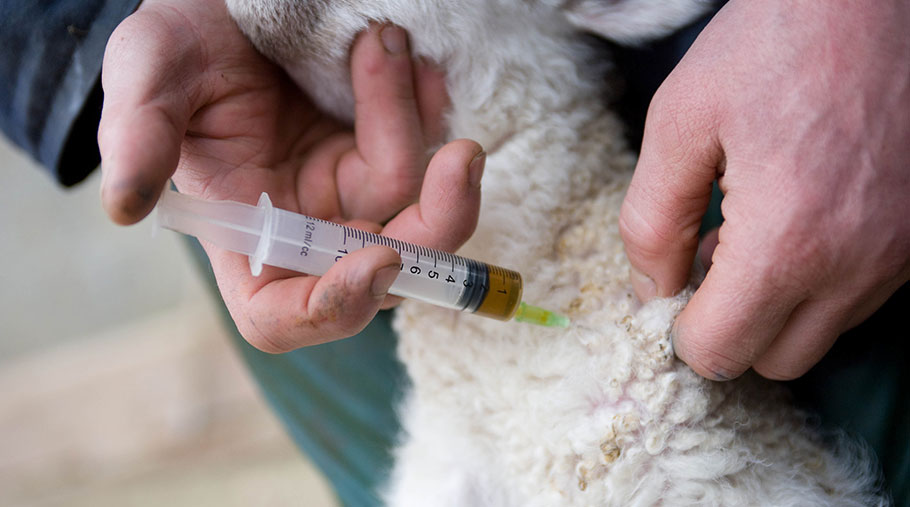Opinion: Ruminant sector must do more to contain antibiotic use
 © Tim Scrivener
© Tim Scrivener Take a bow, UK livestock industry. As chairman of RUMA (Responsible Use of Medicines in Agriculture), I would like to congratulate you on your incredible achievements in reducing farm antibiotic use and putting even the most vehement of our critics firmly on the back foot.
A fall of 18% in sales of all antibiotics last year, which now amounts to a 40% reduction since 2013, means usage now sits at just 37mg/kg as of 2017 – comfortably below the official target of 50mg/kg two years ahead of schedule.
See also: Farmers cut antibiotic use but more work needed
Sales of the highest-priority “critically important” antibiotics have also fallen by 29%, and colistin use is down to 0.001mg per kg; just 7kg of product was sold last year.
Together with Denmark, the UK is now the lowest user of antibiotics among the EU’s major food-producing countries.
Minimising use, and therefore potential resistance, means we are doing right by the British consumer, and we can be proud that our global leadership in health and welfare of farm animals is playing a key role.
This will be even more important as we move into the post-Brexit world, where the challenges of export opportunities and import displacement await us.
More on antibiotics and advice on how you can cut their use
- Sector-specific antibiotics targets and what they mean
- How Dutch farmers reduced antibiotics use by 60%
- How a Somerset dairy farm slashed antibiotic use
- 7 ways a sheep farmer has cut antibiotics use
- Thermal imaging cuts antibiotics use on Northants beef farm
- 5 steps to reduce antibiotics use in your pig herd
- 4 ways Sweden has cut antibiotics use on dairy farms
- 4 ways US dairy has cut antibiotics in lactating cows
- How a farmer tackled watery mouth without antibiotics
What is unique about the UK livestock industry’s achievements is the grassroots engagement without any need for regulation or bans.
Peter Borriello, chief executive of the Veterinary Medicines Directorate, recently said he believes our “ownership” of the problem is what is producing results.
Mind-set and facing up to our responsibilities underpin this. For while the department of health has stated clearly that human medical use of antibiotics is the main driver of antibiotic resistance in people, we as users of antibiotics have an undisputable responsibility for their stewardship too.
Wherever antibiotics are used, the risk of resistance rises across our whole environment. And, given that any new antibiotics developed are unlikely to be licensed for livestock, it is vital we look after the ones we have through responsible and optimal use.
This will not happen overnight. It has taken the poultrymeat sector – widely regarded as the “pathfinder” – six years from the launch of its stewardship programme to reach near optimal levels of use.
Two years in, the pig and gamebird sectors have halved antibiotic use already, but both have more to do.
The benefits these three sectors have is the ability to collect usage data from almost all their producers.
But in the beef, sheep and dairy sectors, diverse supply chains, large producer numbers and the mixed nature of farming makes data collection more challenging.
We have an obligation to solve these problems so that they, like other sectors, can demonstrate their progress.
I hope that the AHDB’s pilot for a dairy and beef cattle version of the successful electronic medicine book for pigs (eMB-Pigs) will, in time, improve things significantly.
The range of use across – and within – all sectors must be tackled too and the focus will be on vets and farmers to improve the health of their charges to close the gap between best and worst.
We don’t know what lies ahead; this story is still unfolding and we must remain ahead of it. But I firmly believe we can reach the challenging, industry-led targets set for individual sectors by 2020.
After that, the job will continue until the only antibiotics needed are to tackle specific short-term disease challenges that threaten animal health and associated welfare.
Gwyn Jones is chairman of Gwyn Jones is chairman of Responsible Use of Medicines in Agriculture (RUMA)
